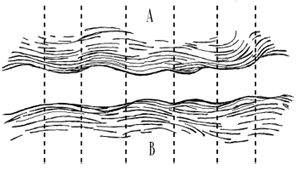“Shifters” between the didactic discourse and the scientific discourse
"Shifters" between the didactic discourse and the scientific discourse
The impact of Saussure's CLG is twofold: on the theory of language, building the innovative structural paradigm of thought, and on the architecture of the linguistic discourse, inaugurating what we will call the relationship-oriented scientific discourse. The present paper will highlight the latter aspect.
Whether the text of the CLG is the collaborative work of Saussure and the „transcribers" (Bally and Sechehaye) is of little importance, if any. The text as a final product circulated across cultures (in the original version or in translations) proposing a new type of linguistic discourse, relocated from the hard core of the „scientific text" to a hybrid position at the interface of writing science and teaching science. On the continuum between the written formal and the oral informal packaging of ideas, between a highly planned discourse and planned spontaneity, coherence breaches turn out to be subtle incentives to critical thinking. This type of discourse does more than putting forth ideas in developing a topic: it directly or indirectly negotiates ideas with the listeners-readers in order to secure the optimal uptake that finally influences the degree of adherence to the theory.
The author (Saussure +/- transcribers) mapped the perlocutionary intention on the surface structure of discourse via what we will call shifters between the didactic discourse and the scientific discourse and vice versa. The text analysis we propose aims at detecting, classifying, and explaining the function of such elements like information formats, metacomments, questions with ambiguous functions, hedging, use of apprehension markers, code switching, etc.
Beyond acknowledging Saussure's eminent and inspirational ideas, we would like to open a topic for debate: to what extent this information packaging contributed to the decisive role the Geneva courses played in the history of linguistics. Speculating in the vein of Saussure, one might say that CLG practically and tacitly illustrates the concept of linguistic sign, i.e. signifiant - signifiée matches acquire value in use.
We propose the contribution for the Didactique du CLG section (session 12), Geneva, January 2017.
Selected Bibliography
Bourdieu, P. 1977. Outline of a theory of practice. Cambridge: Cambridge University Press.
Caffi, C.. 2007. Mitigation. Amsterdam: Elsevier.
Eckert, P. 2000. Linguistic variation as social practice. Oxford: Blackwell.
Halliday, M.A.K. 2004. The language of Science (Vol. 5: Collected Works of Michael A.K. Halliday). London, New York: Continuum.
Halliday, M.A.K., and R. M. James. 2003. Writing Science. London, New York: The Falmer Press.
Hyland, K. 2000/2004. Disciplinary Discourses: Social Interactions in Academic Writing. London: Longman.
Lave, J., and E. Wenger. 1991. Situated learning: Legitimate peripheral participation. Cambridge: Cambridge University Press.
Meyer, P. G. 1997. „Hedging Strategies in Written Academic Discourse: Strengthening the Argument by Weakening the Claim". In: Eds., Markkanen R. and H. Schröder, Hedging and Discourse: Approaches to the Analysis of a Pragmatic Phenomenon in Academic Texts. 21 – 41. Berlin: Walter de Gruyter.
Myers, G. 1989. „The Pragmatics of Politeness in Scientific Articles". Applied Linguistics .Vol. 10. 1 -35.
Richards, K. (2006). Language and Professional Identity. Basingstoke: Macmillan.
Swales, J. 1990. Genre Analysis: English in Academic Research Settings. Cambridge: Cambridge University Press.
Explore Linguistic 74 Variation, 3- 24. Amsterdam: John Benjamins Publishing.
Wenger, E. (1998). Communities of Practice: Learning, Meaning and Identity. Cambridge: Cambridge University Press.
Abstract as PDF
